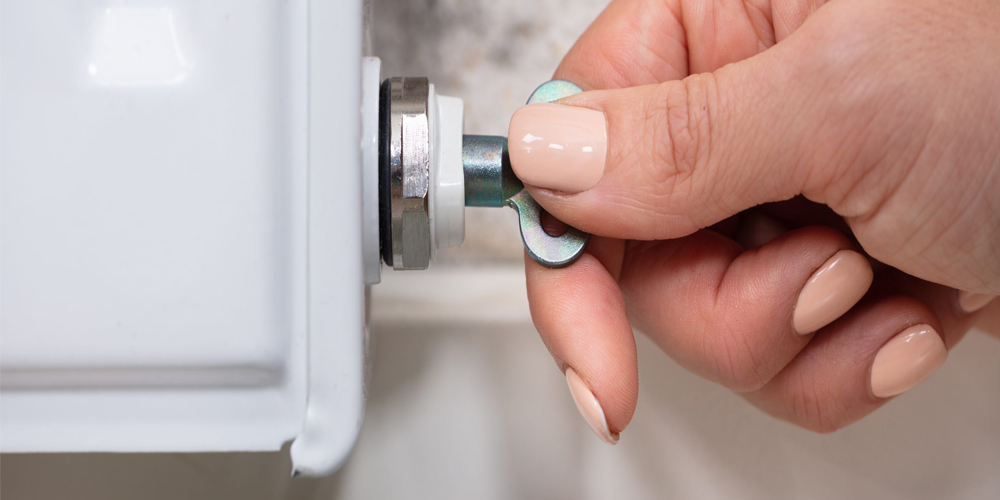Is your house not heating up properly? If so there is a chance that there is air trapped in your radiators which is causing the issue.
In order to, increase the efficiency of your central heating and lower your energy bills, you need to bleed your radiators.
In this guide, I will tell you how to bleed radiators in seven easy steps.
What does bleeding a radiator mean?
Bleeding a radiator means letting out air that is trapped inside your central heating system. Trapped air prevents water from filling up your radiator, and this holds the heating of the whole radiator, creating cold spots.
Signs you need to bleed your radiators
- If your radiator is cold at the top it means air has collected in the radiator, stopping the hot water from circulating around and heating it up properly.
- If you notice damp patches or mold on the walls of your room.
- If you can hear pipes banging or radiators gurgling.
Things you need to bleed the radiator
- A radiator key
- A dry towel to catch any water leakage
- A container to keep under the radiator
- Safety gloves
7 Steps to Bleed Radiators
Follow this simple step-by-step guide to bleed your radiators:
Step 1. Turn on the heating
Before you start bleeding the radiator, turn the heating on so that all the radiators warm up. This builds pressure in your radiator that will push the unwanted air out. This will help you to feel any cold spots and you can identify which radiators need bleeding.
Step 2. Identify which radiators need bleeding
If you find any radiator is cold at the top or you hear any gurgling noises, it indicates that there is trapped air inside and that you will need to bleed it.
Step 3. Turn off your central heating
Now turn off the heating so that the radiators cool down before you touch it to open. It might have scalding water in so be careful and let the radiators cool down completely.
Step 4. Put a towel or cloth under the radiator valve
Locate the radiator bleed valve at the top corner of a radiator. It looks like a round hole with a square inside. Place an old towel or cloth under the valve to catch any discoloured water that may be released.
Step 5. Bleed the radiator
Insert the radiator key into the square and slowly turn it anti-clockwise. You should hear a hissing noise, which is the sound of air escaping from your radiator. Once the air has escaped, it will usually be followed by water. When only a few droplets of water leaks you can close the valve by turning your radiator key clockwise.
Step 6. Repeat the process for other radiators
Repeat this process for any other radiators in your home that need bleeding.
Step 7. Check the boiler pressure
Next you need to check the boiler’s pressure on the gauge. If the boiler pressure is below 1 bar, you will need to re-pressurise the system. If the pressure is normal (between 1 and 1.5 bars), you can switch your heating on and check that your radiators are now heating up as they should.
This is how you can easily bleed your radiators in seven steps! If you would like a helping hand give us a call on 0758 0395 493. Alternatively, you can email me at mike@wirralplumbers.com.








